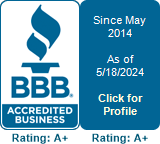Tips for Home Safety and Falls Prevention
CALL IF YOU FALL
Please report all events to our office as soon as possible.
Events include, but are not limited to any falls (with or without injury), infections and antibiotic use, changes in medications, ER visits, physician appointments, urgent care visits, hospitalizations, changes in medication, changes in overall health status, change in residence/phone number, abuse, neglect, exploitation, or theft.
When in doubt, the event should be reported anyway.
We are a 24-hour a day, 7-day a week agency.
Please call our office at (740) 886-7623.
General Guidelines:
- No throw rugs; keep carpets tacked to the floor.
- No highly polished floors.
- Threshold molding should be clearly visible and in good condition.
- Furniture should be arranged to avoid an obstacle course of potential falls.
- Maintain all walking paths free of obstacles (including cords, rugs, magazines, etc.)
- Any objects to be used for transferring should be stable and of proper height (grab bars, wheelchairs, etc.)
- Wear good, supportive shoes (sneakers or tennis shoes)
- Use a “reacher” device or sit down in a chair to pick up objects from floor.
- Avoid use of alcohol.
- Be aware of any side effects from medications (dizziness, vertigo, etc.)
- Have vision and hearing tested and correct any problems, if possible.
Bathroom:
- Use a rubber mat in and out of shower.
- Use only securely fastened grab bars for tub/shower and commode. Do not pull on toilet paper holder, soap dishes or towel racks.
- There should be adequate lighting on paths to bathroom and in bathroom such as a night light.
- The water temperature on your water heater should be set at 110 degrees to help prevent hot water burns.
- Ensure your hot and cold faucets are clearly marked.
- Try dressing while seated.
- Use caution after bathing. A warm bath may make you feel dizzy and/or tired.
Kitchen:
- Do not use heavy pots and/or pans.
- Do not use utensils with faulty handles.
- Make sure that your stove is in good repair with clearly understandable controls.
- Ensure that your most used objects are stored within reach or use a sturdy step stool—not a chair—for objects out of reach. Store heavier objects at waist height.
- When transferring objects on the counter top, slide objects, if possible.
Bedroom:
- Light switches should be within reach of the bed and/or use a nightlight.
- The bed should be at an appropriate height for the patient. Attach a rail to the bed if necessary.
- Any assistive devices (walkers, canes, etc.) should be within reach of the bed.
- Rise slowly from a lying and/or a sitting position. Sit down if you feel dizzy.
Ambulation Tips:
- Remember to use assistive device (walkers, canes, etc.) if one has been recommended by your doctor. Make sure that it is the proper height for you.
- When moving around furniture, take smaller steps.
- Use a tray or bag to carry objects if using a walker. Do not make your walker too heavy.
- Only reach for objects one arm’s length around your sides or front. Anything else may cause you to topple over.
Transferring Tips:
- Use small steps to approach a surface to sit (beds, chairs, commode/toilet, etc.)
- Using both hands, reach back to the chair seat or armrests. Do not sit unless the surface is located with hands and felt on the back of legs, then lower yourself gently.
- When rising, do not pull up using your walker or cane. Push up from the chair with your hands, stand up fully, then put your hands on your walker or cane.
Safety precautions for using a wheelchair around the home:
- Always remember to lock your brakes before attempting to move in or out of the wheelchair.
- Move leg rests out of the way when transferring in and/or out of wheelchair.
- Use “reacher” device to pick up anything off the floor while in the wheelchair. Leaning over to pick things up while in the wheelchair could cause it to tip over.
General Safety Guidelines:
- Have a personal emergency response system (i.e. lifeline)
- Have sound and sight smoke alarms.
- Easy escape access through doors and/or windows.
- Inform your local police and/or fire departments that a homebound and/or wheelchair-using person resides in the dwelling.
- Keep a telephone nearby at all times, if possible.





